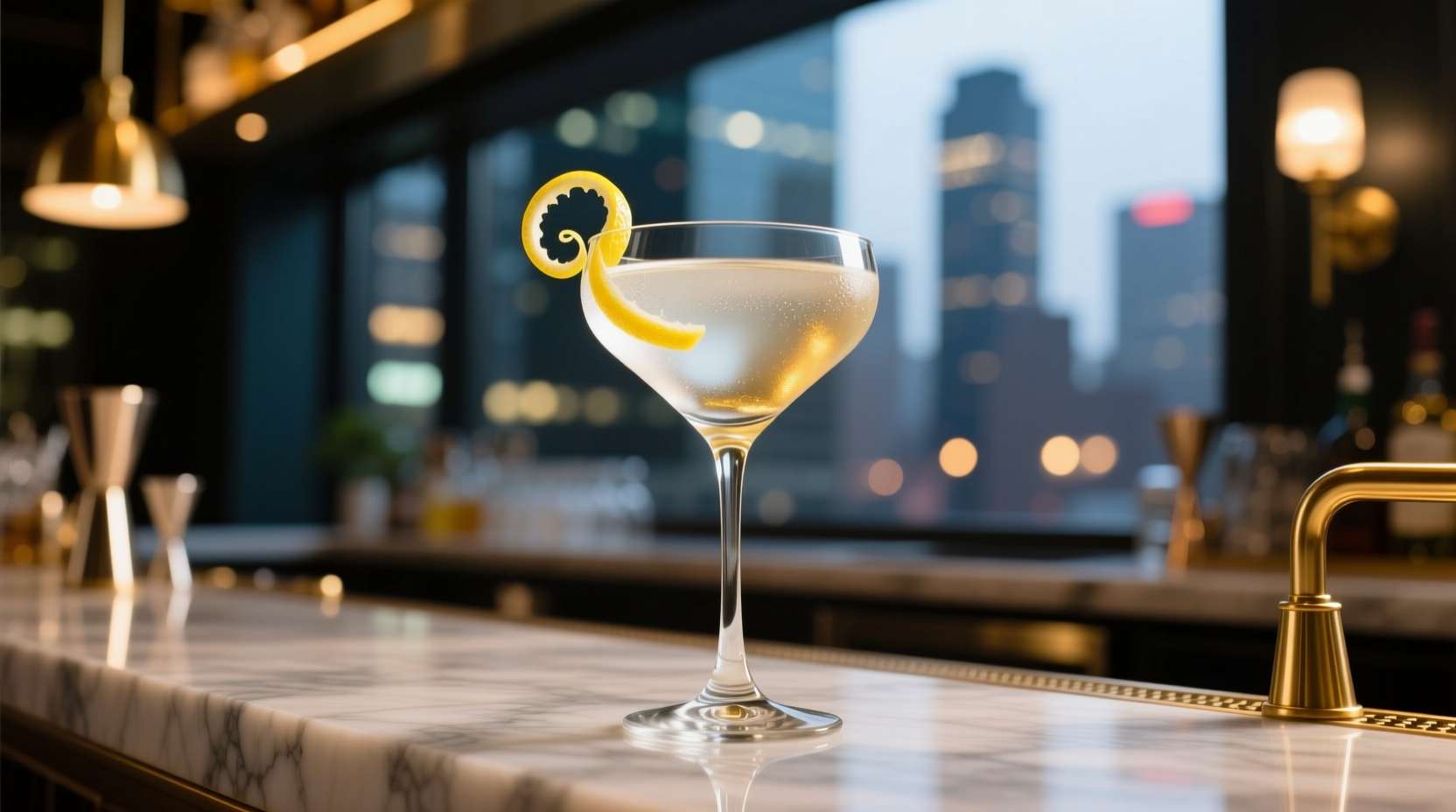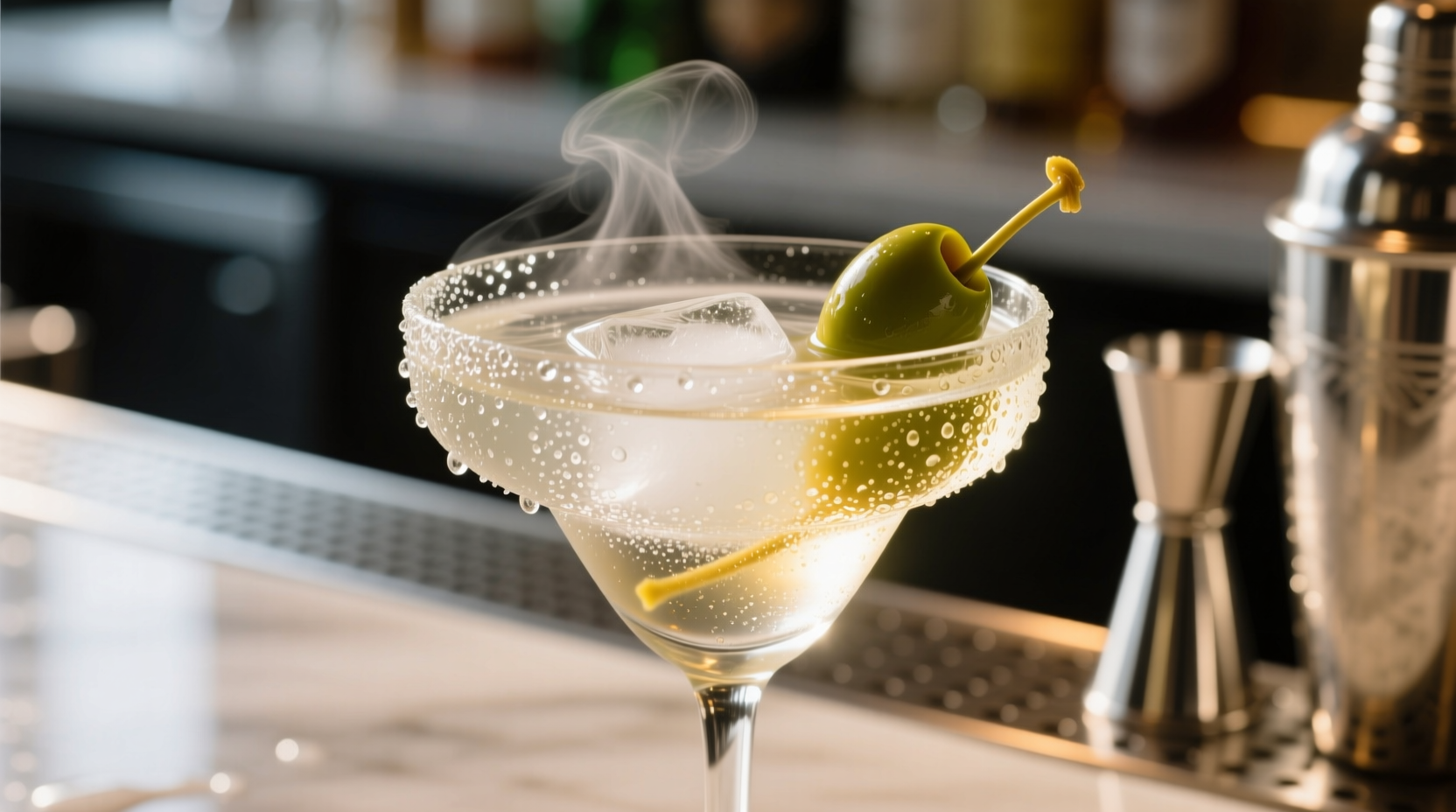When you take your first sip of a perfectly crafted martini, you'll experience an elegant balance of crisp alcohol warmth, subtle herbal complexity, and refreshing dryness. This iconic cocktail's taste profile has captivated discerning palates for over a century, evolving from its original sweet vermouth-forward recipe to the ultra-dry versions popularized in modern times. Understanding exactly what does a martini taste like requires examining its components, preparation methods, and historical evolution.
The Core Flavor Components of a Martini
Every martini's taste begins with its fundamental ingredients. The base spirit—whether gin or vodka—provides the primary flavor foundation, while vermouth adds complexity, and garnishes deliver finishing notes.
Gin vs. Vodka: The Spirit Base Difference
Gin martinis showcase the botanical complexity of their base spirit. London dry gins offer pronounced juniper notes with supporting citrus and spice elements that create a multidimensional tasting experience. When properly chilled and diluted through stirring, the alcohol heat recedes, allowing the nuanced botanical profile to shine through with crisp clarity.
Vodka martinis present a cleaner, more neutral canvas where subtle texture and mouthfeel become more apparent. High-quality vodka provides a smooth, almost creamy texture with minimal flavor interference, allowing the vermouth's herbal notes and garnish characteristics to take center stage. The best vodka martinis taste crisp and refreshing rather than merely alcoholic.
Vermouth's Role in Martini Flavor Development
The vermouth ratio dramatically impacts what a dry martini tastes like. Traditional recipes called for equal parts spirit and vermouth, creating a noticeably herbal, slightly sweet profile. Modern "dry" martinis use minimal vermouth (sometimes just a rinse of the glass), resulting in a much cleaner, crisper taste where the base spirit's character dominates.
Quality vermouth matters significantly—fresh, properly stored vermouth contributes subtle herbal complexity without overwhelming sweetness. Oxidized or improperly stored vermouth introduces unpleasant musty notes that ruin the delicate balance. This explains why many classic cocktail authorities insist on using only recently opened vermouth for the best martini taste experience.
| Martini Style | Vermouth Ratio | Primary Flavor Notes | Texture/Mouthfeel |
|---|---|---|---|
| Classic (1920s) | 2:1 | Herbal, floral, subtle sweetness | Smooth, rounded |
| Dry (1950s) | 3:1 | Crisp, juniper-forward, mild herbal notes | Clean, refreshing |
| Extra Dry (Modern) | 6:1 or higher | Predominantly spirit character, faint herbal hint | Sharp, crisp, slightly viscous |
| Vesper | Gin/Vodka blend | Complex botanicals with smooth finish | Rich, rounded |
How Preparation Affects Martini Taste
The method used to prepare your martini significantly influences what does a martini taste like. Temperature, dilution, and aeration all play crucial roles in the final flavor profile.
Stirred vs. Shaken: The Flavor Difference
Stirred martinis maintain crystal clarity and a silky-smooth texture. The gentle dilution from stirring with ice preserves the spirit's integrity while taking the harsh edge off the alcohol. This method produces the cleanest expression of the base spirit's character with minimal aeration.
Shaken martinis introduce tiny air bubbles that create a slightly cloudy appearance and a more aerated, lively mouthfeel. The vigorous shaking also increases dilution slightly and can subtly change how the flavors express themselves on the palate. While James Bond popularized the shaken martini, most professional bartenders prefer stirring for optimal flavor expression.
The Critical Role of Temperature
Serving temperature dramatically affects martini flavor perception. A properly chilled martini (ideally between 20-28°F/-7 to -2°C) suppresses the perception of alcohol heat while enhancing the crisp, clean character. Room temperature martinis taste harsh and alcoholic, while over-chilled martinis numb the palate, muting the subtle flavor nuances.

Martini Evolution: A Flavor Timeline
Understanding what a martini tastes like today requires examining its historical transformation. The martini's flavor profile has evolved significantly since its emergence in the late 19th century:
- 1880s-1900s: The original Martinez cocktail featured sweet vermouth, Old Tom gin (sweeter than modern London dry), maraschino liqueur, and bitters—a noticeably sweeter, more complex profile than today's versions
- 1910s-1920s: Prohibition-era substitutions led to drier recipes using available spirits, with equal parts gin and dry vermouth becoming standard
- 1930s-1950s: The "dry" martini emerged with ratios shifting to 3:1 spirit to vermouth, emphasizing the spirit's character
- 1960s-1980s: Ultra-dry martinis (6:1 or higher) became fashionable, with some patrons requesting merely a gaze at the vermouth bottle
- 1990s-Present: Craft cocktail revival brought renewed appreciation for balanced ratios, quality ingredients, and proper technique
This historical evolution explains why asking what does a dirty martini taste like versus a classic dry martini yields very different answers—the preparation standards have shifted dramatically over time. Modern craft cocktail bars often return to more balanced ratios (4:1 or 5:1) that showcase both spirit and vermouth characteristics.
Contextual Factors That Influence Martini Flavor
Certain preparation variables create context boundaries that determine when specific martini styles work best:
- Gin quality matters most in drier recipes—with minimal vermouth, inferior gin's flaws become more apparent
- Vodka martinis benefit from slightly more vermouth (4:1 rather than 6:1) to add necessary complexity
- Extreme dryness works best with premium spirits—lower quality bases require vermouth's smoothing effect
- Food pairing changes perception—olives add saltiness that balances dryness, while lemon twists provide bright acidity
Common Misconceptions About Martini Taste
Several myths persist about what does a vodka martini taste like versus a gin martini:
- "Vodka martinis taste like nothing"—well-made vodka martinis showcase texture and subtle flavor notes when properly prepared
- "All martinis taste extremely dry"—traditional recipes were considerably more balanced
- "Shaking "bruises" the gin"—while shaking changes texture, it doesn't chemically damage the spirit
- "More vermouth makes it taste like medicine"—fresh vermouth adds pleasant herbal complexity when properly balanced
How to Properly Taste a Martini
To fully appreciate what does a perfect martini taste like, follow these professional tasting steps:
- Examine the appearance—clarity indicates proper preparation technique
- Smell before tasting—identify primary botanical notes (juniper in gin, neutral character in vodka)
- Take a small sip and let it coat your palate—notice the balance of spirit, vermouth, and alcohol warmth
- Pay attention to the finish—high-quality martinis have a clean, refreshing finish rather than harsh alcohol burn
- Observe how the flavor evolves as the drink slightly warms
Understanding these elements helps explain why what does a dirty martini taste like differs from a classic preparation—the olive brine adds savory, saline notes that transform the flavor profile into something distinctly different from the clean, crisp standard.
Perfect Pairings for Enhancing Martini Flavor
Certain foods complement a martini's flavor profile exceptionally well:
- Citrus-forward appetizers—lemon wedges or citrus-marinated olives enhance the bright notes
- Salty accompaniments—high-quality olives or capers balance the dryness
- Fatty foods—anchovies or cured meats contrast beautifully with the crisp profile
- Nutty flavors—marcona almonds provide textural contrast that complements the smooth liquid
These pairings demonstrate how context affects flavor perception—what a martini tastes like changes subtly when enjoyed alongside complementary foods, creating a more complex sensory experience than drinking it alone.
Frequently Asked Questions
What does a classic martini taste like compared to a dirty martini?
A classic martini offers a clean, crisp profile dominated by the base spirit's character with subtle herbal notes from vermouth. A dirty martini incorporates olive brine, adding savory, salty notes that transform the flavor into something noticeably richer and more complex, with the olive's umami characteristics balancing the cocktail's natural dryness.
Why do some martinis taste harsh while others are smooth?
The smoothness of a martini depends on proper dilution and temperature. Insufficient dilution leaves excessive alcohol heat, while proper stirring with ice achieves ideal dilution (around 20-25%) that softens the alcohol bite. Temperature also matters—properly chilled martinis suppress alcohol perception, while warmer drinks taste harsher. Quality ingredients and correct spirit-to-vermouth ratios further contribute to a smooth drinking experience.
Does a vodka martini taste different from a gin martini?
Yes, significantly. A gin martini showcases botanical complexity with juniper as the dominant note, supported by citrus and spice elements from the gin's botanical blend. A vodka martini presents a cleaner, more neutral profile where texture and mouthfeel become more noticeable, with vermouth and garnish characteristics taking greater prominence. The best vodka martinis taste crisp and refreshing rather than merely alcoholic when properly prepared.
How does vermouth ratio affect what a martini tastes like?
Vermouth ratio dramatically impacts flavor. Traditional 2:1 ratios create a noticeably herbal, slightly sweet profile. Modern 5:1 or 6:1 "dry" martinis emphasize the base spirit's character with only a hint of vermouth's herbal complexity. Extremely dry preparations (10:1 or higher) taste predominantly of the base spirit with minimal complexity. Fresh vermouth is essential—oxidized vermouth introduces unpleasant musty notes that ruin the delicate balance.
Why does temperature matter for martini flavor?
Temperature significantly affects flavor perception. A properly chilled martini (20-28°F/-7 to -2°C) suppresses alcohol heat while enhancing crispness. Room temperature martinis taste harsh and alcoholic as the alcohol vapors overwhelm the palate. Over-chilled martinis numb the palate, muting subtle flavor nuances. The ideal temperature allows all components to express themselves harmoniously without excessive alcohol burn.











 浙公网安备
33010002000092号
浙公网安备
33010002000092号 浙B2-20120091-4
浙B2-20120091-4